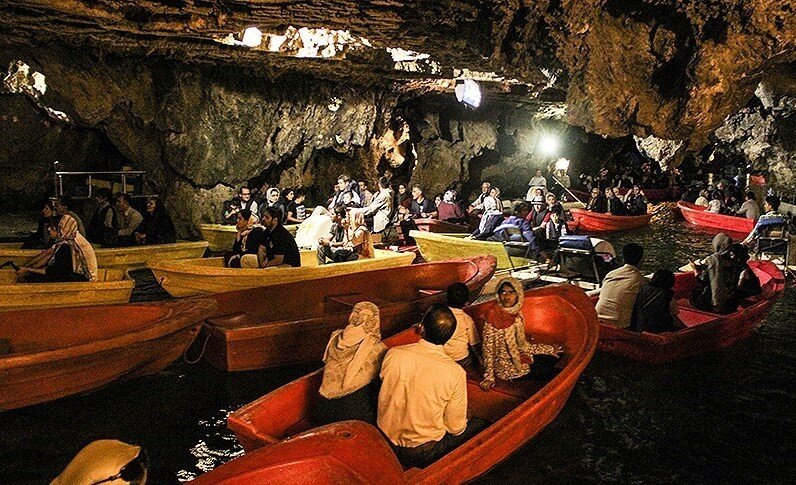Eid al-Fitr holidays: Ali-Sadr Cave records over 24,000 visits

TEHRAN – During the two-day holiday of Eid al-Fitr, Ali-Sadr water cave in the west-central province of Hamedan, was visited by over 24,000 people, a local official has said.
Moreover, some 95,000 people visited the natural attraction since the beginning of the current Iranian calendar year (March 21), Karim Maleki said on Wednesday.
Ali-Sadr water cave is a top destination for domestic and foreign sightseers, researchers, history buffs, and day-trippers.
The cave is a gigantic water-filled cavern wieldy believed to date from the Jurassic era. It embraces a huge matrix of sunless channels, ponds, grottoes, and water passages which are stretched along with imposing rock formations and stalactite-covered tops in a span of several kilometers.
The entrance to the lengthy cave is situated some 70km north of Hamadan.
Sightseeing there is connected with traversing well-lit labyrinths of waterways via paddle boats, walking on subterranean islets, as well as observing rock carvings of hunting scenes, artifacts, paintings, and vessels that are associated with prehistorical troglodytes.
Known in classical times as Ecbatana, Hamedan was one of the ancient world’s greatest cities. Pitifully little remains from antiquity, but significant parts of the city center are given over to excavations. Ecbatana was the capital of Media and subsequently a summer residence of the Achaemenian kings who ruled Persia from 553 to 330 BC.
Hamedan has had many names: it was possibly the Bit Daiukki of the Assyrians, Hangmatana, or Agbatana, to the Medes, and Ecbatana to the Greeks. One of the Median capitals, under Cyrus II (the Great; died 529 BC) and later Achaemenian rulers, it was the site of a royal summer palace.
About 1220 Hamedan was destroyed by the Mongols. In 1386 it was sacked by Timur (Tamerlane), a Turkic conqueror, and the inhabitants were massacred. It was partly restored in the 17th century and subsequently changed hands often between Iranian ruling houses and the Ottomans.
Sitting on a high plain, Hamedan is graciously cool in August but snow prone and freezing from December to March. In summer the air is often hazy.
Ganjnameh inscriptions, Avicenna Mausoleum, Hegmataneh hill, Alaviyan dome, Jameh mosque, and St. Stephanos Gregorian Church are among Hamedan’s attractions to name a few.
ABU/AM
Leave a Comment